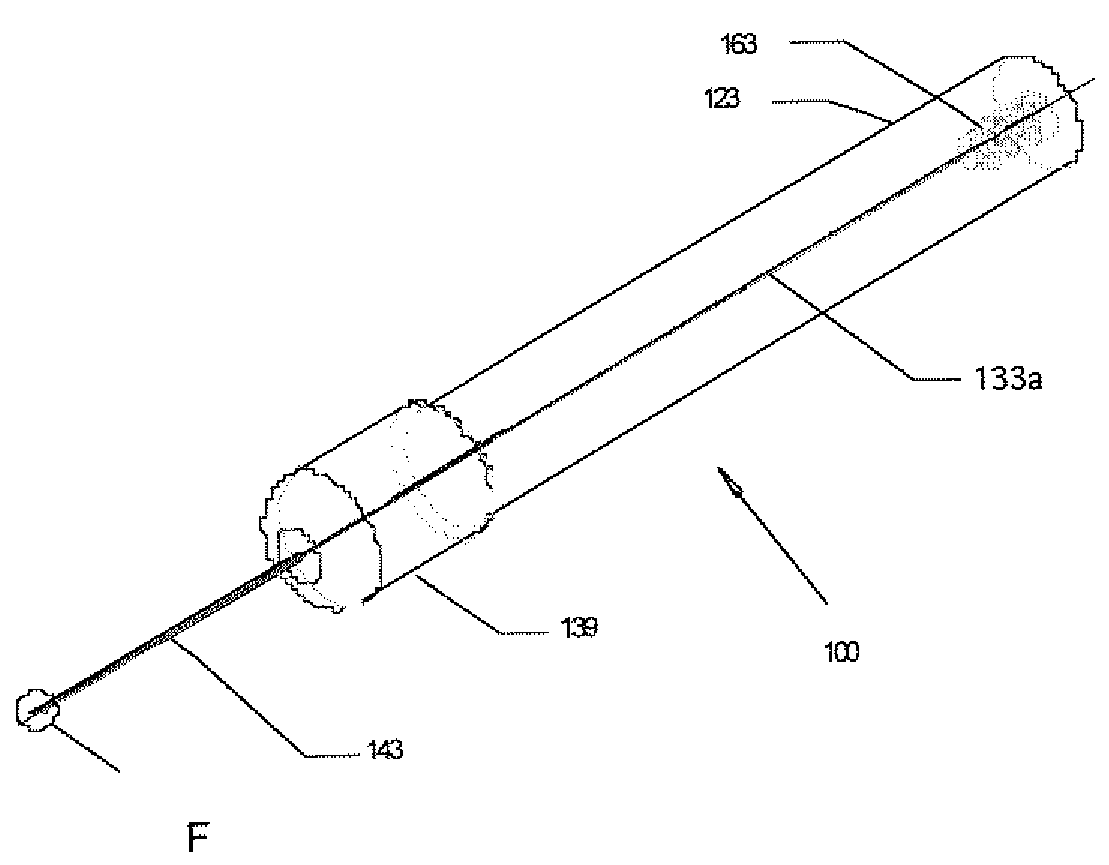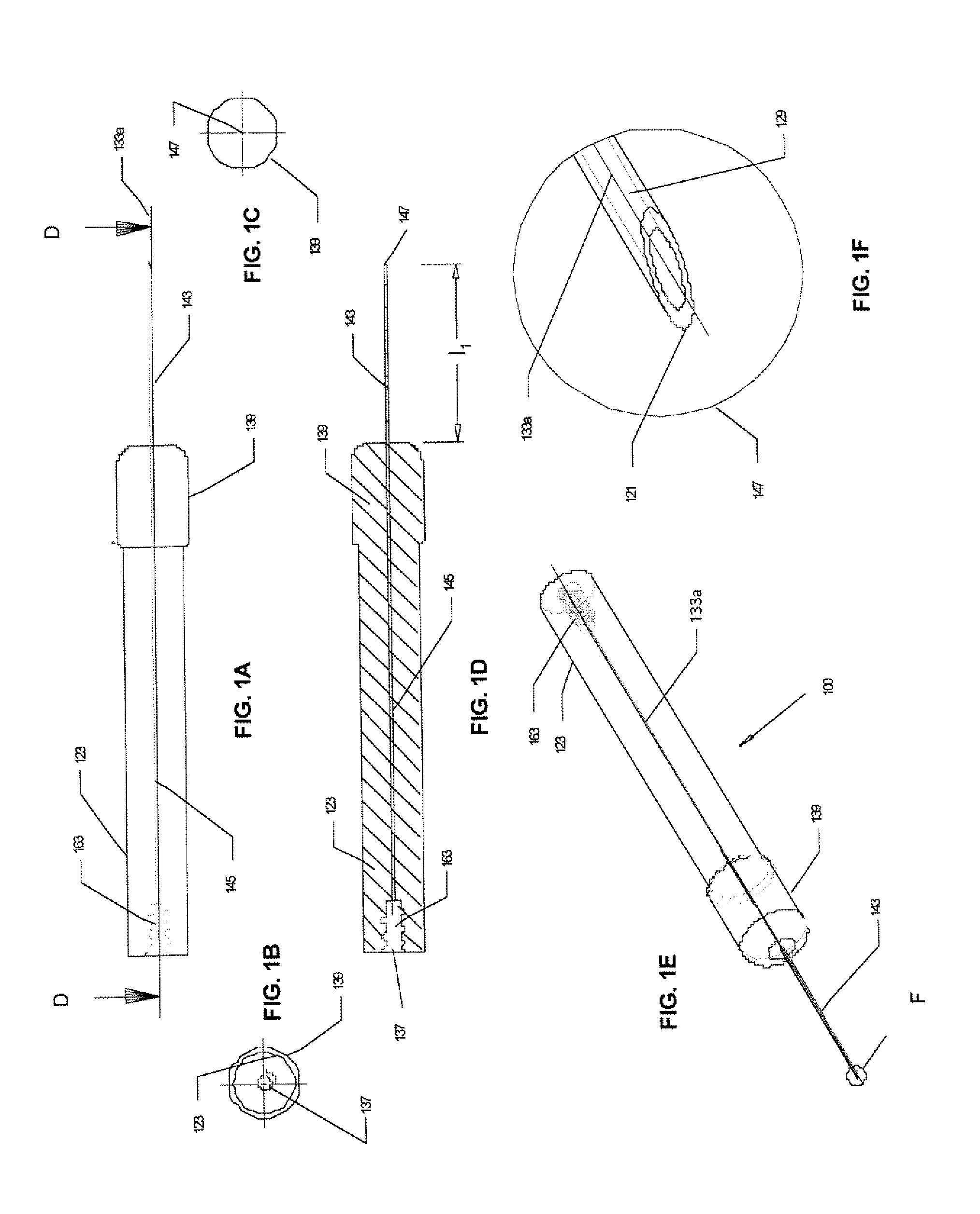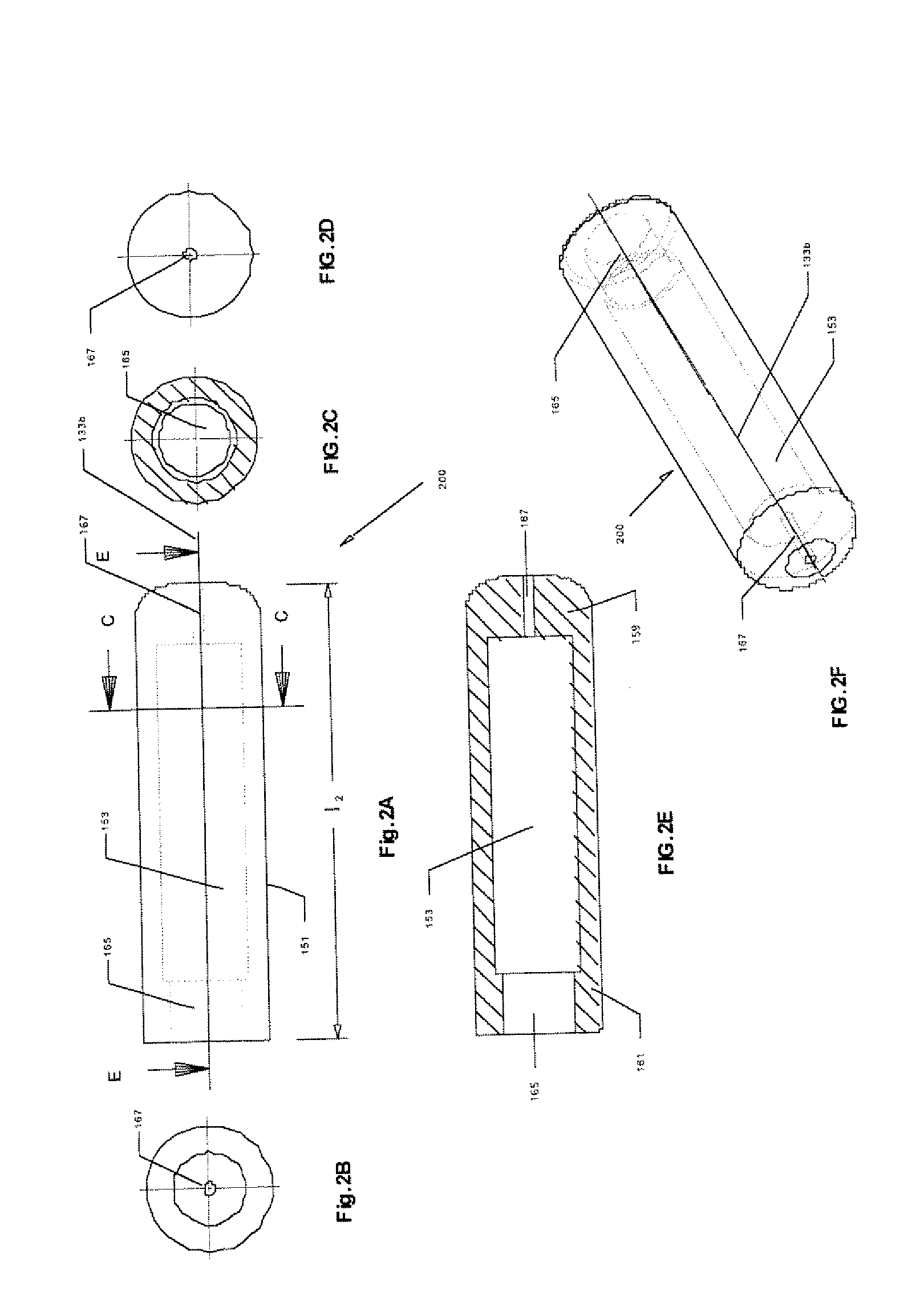Hollow needle assembly
a needle and needle body technology, applied in the field of hollow needle assembly, can solve the problems of inability to accurately analyze blood samples, delay in actual analysis of blood samples, and unnecessary blood handling, so as to minimize the risk of injury and blood contamination, minimize the discomfort of the patient, and avoid injury
- Summary
- Abstract
- Description
- Claims
- Application Information
AI Technical Summary
Benefits of technology
Problems solved by technology
Method used
Image
Examples
first embodiment
[0085]Referring to FIG. 1A, shown is a schematic drawing illustrating a top view of a needle 100 for a hollow needle assembly according to the invention; FIG. 1B illustrates a left side-view of the apparatus shown in FIG. 1A; FIG. 1C illustrates a right side-view of the apparatus shown in FIG. 1A; FIG. 1D illustrates a cross-sectional view through the apparatus shown in FIG. 1A along line D-D; FIG. 1E illustrates a perspective view of the apparatus shown in FIG. 1A; and FIG. 1F illustrates a detailed view of the detail F shown in FIG. 1E.
[0086]Still referring to FIG. 1, the needle 100 comprises a shaft 143 and a hub with a front end 139 and a back end 123. The shaft 143 has a sharp open end 147 and a second end, which is mounted in the passage 145 of the hub. A detailed view of the sharp open end 147 (detail F in FIG. 1E) is shown in FIG. 1F. The sharp open end 147 is usually the beveled end of the shaft, which is usually a hollow metal tube. It should be understood that the sharp o...
second embodiment
[0089]Referring to FIG. 3A, shown is a schematic drawing illustrating a top view of a needle for a hollow needle assembly according to the invention; FIG. 3B illustrates a left side-view of the apparatus shown in FIG. 3A; FIG. 3C illustrates a right side-view of the apparatus shown in FIG. 3A; FIG. 3D illustrates a cross-sectional view through the apparatus shown in FIG. 3A along line D-D; FIG. 3E illustrates a perspective view of the apparatus shown in FIG. 3A; and FIG. 3F illustrates an alternative perspective view of the apparatus shown in FIG. 3A. The apparatus 100 illustrated in FIG. 3 is similar to the apparatus 100 illustrated in FIG. 1, and accordingly, elements common to both share common reference numerals. The primary differences, illustrated in FIG. 3, are that the back end of the hub 139 contains external threads 173 for mating with internal threads 175 in a complementary barrel 200 shown in FIG. 4, and the blunt open end 137 is housed in a tapered projection 171, where...
fourth embodiment
[0094]Referring to FIG. 8A, shown is a schematic drawing illustrating a top view of the needle and barrel assembly 700, as shown in FIG. 7, with the needle concealed inside the barrel, and with an optional safety cap 189 engaged, according to the invention; FIG. 8B illustrates a left side-view of the apparatus shown in FIG. 8A; FIG. 8C illustrates a right side-view of the apparatus shown in FIG. 8A; and FIG. 8D illustrates a cross-sectional view through the apparatus shown in FIG. 8A along line D-D. The apparatus 700 illustrated in FIG. 8 is similar to the apparatus 500 illustrated in FIG. 7, and accordingly, elements common to both share common reference numerals. The primary differences, illustrated in FIG. 8, are that the needle shaft 143 is withdrawn inside the barrel 200, and a safety cap 189 is fitted over the open anterior end 159 of the barrel, to further protect the user from accidental injury.
[0095]Referring to FIG. 9A, shown is a schematic drawing of an apparatus 800, ill...
PUM
 Login to View More
Login to View More Abstract
Description
Claims
Application Information
 Login to View More
Login to View More - R&D
- Intellectual Property
- Life Sciences
- Materials
- Tech Scout
- Unparalleled Data Quality
- Higher Quality Content
- 60% Fewer Hallucinations
Browse by: Latest US Patents, China's latest patents, Technical Efficacy Thesaurus, Application Domain, Technology Topic, Popular Technical Reports.
© 2025 PatSnap. All rights reserved.Legal|Privacy policy|Modern Slavery Act Transparency Statement|Sitemap|About US| Contact US: help@patsnap.com



